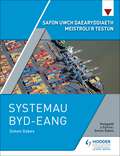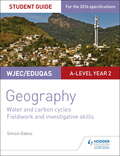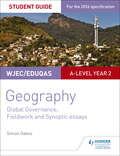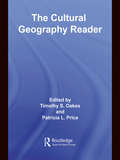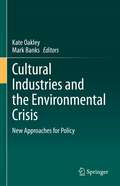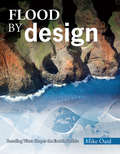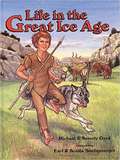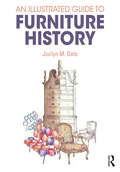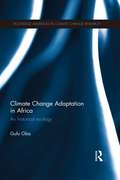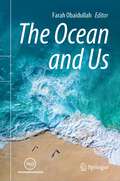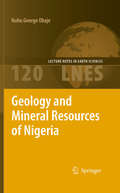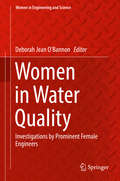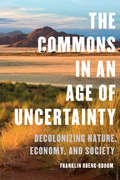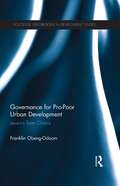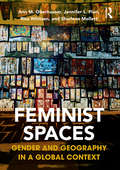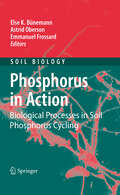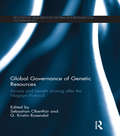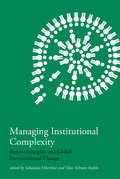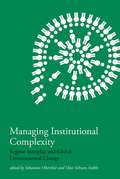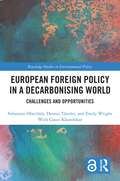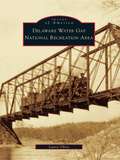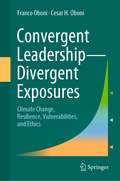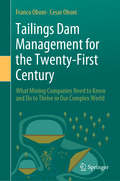- Table View
- List View
Safon Uwch Daearyddiaeth Meistroli’r Testun: Systemau Byd-eang
by Simon OakesMaster the in-depth knowledge and higher-level skills that A-level Geography students need to succeed; this focused topic book extends learning far beyond your course textbooks.Blending detailed content and case studies with questions, exemplars and guidance, this book:- Significantly improves students' knowledge and understanding of A-level content and concepts, providing more coverage of Global Systems than your existing resources- Strengthens students' analytical and interpretative skills through questions that involve a range of geographical data sources, with guidance on how to approach each task- Demonstrates how to evaluate issues, with a dedicated section in every chapter that shows how to think geographically, consider relevant evidence and structure a balanced essay- Equips students with everything they need to excel, from additional case studies and definitions of key terminology, to suggestions for further research and fieldwork ideas for the Independent Investigation- Helps students check, apply and consolidate their learning, using end-of-chapter refresher questions and discussion points- Offers trusted and reliable content, written by a team of highly experienced senior examiners and reviewed by academics with unparalleled knowledge of the latest geographical theories
WJEC/Eduqas A-level Geography Student Guide 4: Water and carbon cycles; Fieldwork and investigative skills
by Simon OakesReinforce students' geographical understanding throughout their course; clear topic summaries with sample questions and answers help students improve their exam technique and achieve their best.Written by a teacher with extensive examining experience, this guide:- Helps students identify what they need to know with a concise summary of the topics examined at AS and A-level- Consolidates understanding through assessment tips and knowledge-check questions- Offers opportunities for students to improve their exam technique by consulting sample graded answers to exam-style questions- Develops independent learning and research skills- Provides the content students need to produce their own revision notes
WJEC/Eduqas A-level Geography Student Guide 4: Water and carbon cycles; Fieldwork and investigative skills
by Simon OakesExam board: WJECLevel: A-levelSubject: GeographyFirst teaching: September 2016First exams: Summer 2018 Reinforce students' geographical understanding throughout their course; clear topic summaries with sample questions and answers help students improve their exam technique and achieve their best.Written by a teacher with extensive examining experience, this guide:- Helps students identify what they need to know with a concise summary of the topics examined at AS and A-level- Consolidates understanding through assessment tips and knowledge-check questions- Offers opportunities for students to improve their exam technique by consulting sample graded answers to exam-style questions- Develops independent learning and research skills- Provides the content students need to produce their own revision notes
WJEC/Eduqas A-level Geography Student Guide 5: Change and challenges; 21st century challenges
by Simon OakesReinforce students' geographical understanding throughout their course; clear topic summaries with sample questions and answers help students improve their exam technique and achieve their best.Written by teachers with extensive examining experience, this guide:- Helps students identify what they need to know with a concise summary of the topics examined at AS and A-level- Consolidates understanding through assessment tips and knowledge-check questions- Offers opportunities for students to improve their exam technique by consulting sample graded answers to exam-style questions- Develops independent learning and research skills- Provides the content students need to produce their own revision notes
WJEC/Eduqas A-level Geography Student Guide 5: Global Governance: Change and challenges; 21st century challenges
by Simon OakesExam Board: WJEC, Eduqas Level: AS/A-level Subject: Geography First Teaching: September 2016 First Exam: Summer 2017Reinforce students' geographical understanding throughout their course; clear topic summaries with sample questions and answers help students improve their exam technique and achieve their best.Written by teachers with extensive examining experience, this guide:- Helps students identify what they need to know with a concise summary of the topics examined at AS and A-level- Consolidates understanding through assessment tips and knowledge-check questions- Offers opportunities for students to improve their exam technique by consulting sample graded answers to exam-style questions- Develops independent learning and research skills- Provides the content students need to produce their own revision notes
The Cultural Geography Reader
by Timothy Oakes Patricia L. PriceThe Cultural Geography Reader draws together fifty-two classic and contemporary abridged readings that represent the scope of the discipline and its key concepts. Readings have been selected based on their originality, accessibility and empirical focus, allowing students to grasp the conceptual and theoretical tools of cultural geography through the grounded research of leading scholars in the field. Each of the eight sections begins with an introduction that discusses the key concepts, its history and relation to cultural geography and connections to other disciplines and practices. Six to seven abridged book chapters and journal articles, each with their own focused introductions, are also included in each section. The readability, broad scope, and coverage of both classic and contemporary pieces from the US and UK makes The Cultural Geography Reader relevant and accessible for a broad audience of undergraduate students and graduate students alike. It bridges the different national traditions in the US and UK, as well as introducing the span of classic and contemporary cultural geography. In doing so, it provides the instructor and student with a versatile yet enduring benchmark text.
Cultural Industries and the Environmental Crisis: New Approaches for Policy
by Kate Oakley Mark BanksThis volume critiques the current model of the creative economy, and considers alternative models that may point to greener, cleaner, more sustainable and socially just cultural and creative industries. Aimed at the nexus of cultural and environmental concerns, the book assesses the ways in which arts and cultural activities can help develop ideas of the ‘good life’ beyond excessive and unsustainable material consumption, and explores the complex interactions between cultural prosperity, place and the quality (and availability) of employment, leisure and the rights to self-expression. Adopting a deliberately wide and inclusive interdisciplinary and international perspective, contributors to this volume showcase current and future ways of ‘doing’ creative economy, ecologically, otherwise and differently. In 11 chapters, the book outlines some of the most relevant arguments from among the growing literature that critically analyzes the current creative economy, with a focus on issues of gentrification, inequality and environment. This volume is timely, as it emerges into a political and economic context that is seeking desperately to ‘reboot’ the economy, re-establish ‘business as usual’ and to do so partly through significant investment and expansion in the creative economy. The book will be suitable for upper level undergraduates and postgraduates studying a wide range of topics, including: cultural and creative industries, media and communications, cultural studies, cultural policy, human geography, environmental humanities and environmental policy, and will be of further interest to arts professionals, creative economy researchers and policymakers. The chapter “Towards a New Paradigm of the Creative City or the Same Devil in Disguise? Culture-led Urban (Re)development and Sustainability” is available open access under a Creative Commons Attribution 4.0 International License via link.springer.com.
Flood By Design
by Michael OardThere are features on the earth's surface that science cannot explain with theories of changes over millions or even billions of years by the geographic processes that we see occurring commonly today. However, when you explore the evidence from a biblical worldview, the geological features marking the planet's surface make sense given the worldview catastrophic flood described in the book of Genesis. Join author Mike Oard as he explores what is termed as "the retreating stage of the flood" - the seven month-period when the waters receded and the landscapes which are familiar to us were formed by a myriad of processes like uplifts and sinking, erosion, and more, which answer important questions regarding: Unusual dispersals of rocks over hundred of miles How quickly mountains and valleys were carved Emergence of continents and the formation of ocean basins Percussions marks shaped by vast and violently moving water Why very gradual erosion and deposits of soil cannot explain surface formations The study of geomorphology and what it can reveal Flood by Design takes you into a fascinating aspect of the Genesis flood you may never have considered. Examine unusual rock formations and evidence that only the biblical flood model can fully explain. Filled with many photographs and easy-to-understand illustrations and charts, the books is a powerful source of research and answers for high school students and beyond.
Life in the Great Ice Age
by Michael Oard Beverly Oard Earl Snellenberger Bonita SnellenbergerAfter Noah's Flood the earth and its climate were undergoing drastic changes. The stage has been set for the Great Ice Age. Noah's descendants had to learn how to survive in a strange often hostile land. In part one of Life in the Great Ice Age , we'll spend summer with Jabeth and his family as they survive a saber-toothed tiger attack, battler cave bear, and go on a woolly mammoth hunt. Part two explains the scientific reasons for the Ice Age: what caused it, and how long it lasted. It answers the question, "Will there be another Ice Age?" Archaeological and fossil finds are also discussed in detail in this exciting book that explains the Great Ice Age from a Biblical perspective.
An Illustrated Guide to Furniture History
by Joclyn M. OatsAn Illustrated Guide to Furniture History provides upper-level students and instructors with an alternative visual analytical approach to learning about furniture history from Antiquity to Postmodernism. Following an immersive teaching model, it presents a Nine-Step Methodology to help students strengthen their visual literacy and quickly acquire subject area knowledge. Moving chronologically through key periods in furniture history and interior design, such as the Renaissance, the Arts and Crafts Movement, and Modernism, it traverses Europe to America to present a comprehensive foundational guide to the history of furniture design. Part I addresses furniture within the context of the built environment, with chapters exploring the historical perspective, construction principles, and the categorization of furniture. In Part II, the author visually depicts the structural organization of the methodological process, a three-category framework: History, Aesthetics, and Visual Notes. The chapters in this part prepare the reader for the visual analysis that will occur in the final section of the book. The book is lavishly illustrated in full color with over 300 images to reinforce visual learning and notation. A must-have reference and study guide for students in industrial and product design, interior design, and architecture.
Climate Change Adaptation in Africa: An Historical Ecology (Routledge Advances in Climate Change Research)
by Gufu ObaIn the context of growing global concerns about climate change, this book presents a regional and sub-continental synthesis of pastoralists' responses to past environmental changes and reflects on the lessons for current and future environmental challenges. Drawing from rock art, archaeology, paleoecological data, trade, ancient hydrological technology, vegetation, social memory and historical documentation, this book creates detailed reconstructions of past climate change adaptations across Sahelian Africa. It evaluates the present and future challenges to climate change adaptation in the region in terms of social memory, rainfall variability, environmental change and armed conflicts and examines the ways in which governance and policy drivers may undermine pastoralists’ adaptive strategies. The book’s scope covers the Red Sea coast, Somaliland, Somalia, the Ogaden region of Ethiopia, and northern Kenya, part of the Ethiopian highlands and Eritrea, areas where past climate change has been extreme and future change makes it vital to understand the dynamics of adaptation. This book will be of interest to students and scholars of environmental history, human ecology, geography, climate change, environment studies, development studies, pastoralism, anthropology and African studies.
The Ocean and Us
by Farah ObaidullahThe Ocean and Us provides an overview of our contemporary understanding of the ocean and all the ways our lives interact with it. It is intended for everyone with an interest in our blue planet. The book brings together the expertise of over 35 ocean specialists from around the world. It explores a wide variety of themes including the importance of a healthy ocean in the fight to halt and contain climate change. It covers issues such as overfishing and pollution, as well as emerging themes such as the blue economy, marine animal welfare and how we can leverage innovation to protect the ocean. The book provides an overview of some of the world’s iconic threatened and at risk ocean ecosystems, and outlines current governance structures and ocean management tools. It also discusses the important social dimensions between people and the ocean, such as ocean and human wellbeing, communities and the ocean, and who gets to participate in the ocean space. The book aims to enhance ocean literacy by making specialist concepts accessible to non-experts, with a view to empowering concerned citizens everywhere to come into action for the ocean, and pave a better way forward for humanity.
Geology and Mineral Resources of Nigeria
by Nuhu George ObajeContains details on the geological units of Nigeria and the associated mineral resources. The book is divided into three parts. Part 1 discusses the geology of the crystalline rocks and their regional distribution while the sedimentary basins constitute the subject of Part 2. Part 3 takes the mineral resources of Nigeria one on one, their geological environment, mode of occurrence, localities and where possible the reserves estimation. Thereafter, an account of the previous and current mining policies (including that of petroleum) of the Nigerian government is given and goes ahead to list some specific investment opportunities in the solid minerals sector.
Women in Water Quality: Investigations by Prominent Female Engineers (Women in Engineering and Science)
by Deborah Jean O’BannonThis volume captures the impact of women’s research on the public health and environmental engineering profession. The volume is written as a scholarly text to demonstrate that women compete successfully in the field, dating back to 1873. Each authors’ chapter includes a section on her contribution to the field and a biography written for a general audience. This volume also includes a significant representation of early women’s contributions, highlighting their rich history in the profession. The book covers topics such as drinking water and health, biologically-active compounds, wastewater management, and biofilms. This volume should be of interest to academics, researchers, consulting engineering offices, and engineering societies while also inspiring young women to persist in STEM studies and aspire to academic careers.Features a blend of innovations and contributions made by women in water quality engineering, as well as their path to success, including challenges in their journeysPresents an opportunity to learn about the breadth and depth of the field of water qualityIncludes a history of women in water quality engineering as well as research in current issues such as urban water quality, biologically-active compounds, and biofilms
The Commons in an Age of Uncertainty: Decolonizing Nature, Economy, and Society
by Franklin Obeng-OdoomIn the last two hundred years, the earth has increasingly become the private property of a few classes, races, transnational corporations, and nations. Repeated claims about the "tragedy of the commons" and the "crisis of capitalism" have done little to explain this concentration of land, encourage solution-building to solve resource depletion, or address our current socio-ecological crisis. The Commons in an Age of Uncertainty presents a new explanation, vision, and action plan based on the idea of commoning the land. The book argues that by commoning the land, rather than privatising it, we can develop the foundation for prosperity without destructive growth and address both local and global challenges. Making the land the most fundamental priority of all commons does not only give hope, it also opens the doors to a new world in which economy, environment, and society are decolonised and liberated.
Governance for Pro-Poor Urban Development: Lessons from Ghana (Routledge Explorations in Development Studies)
by Franklin Obeng-OdoomThe world development institutions commonly present 'urban governance' as an antidote to the so-called 'urbanisation of poverty' and 'parasitic urbanism' in Africa. Governance for Pro-Poor Urban Development is a comprehensive and systematic analysis of the meaning, nature, and effects of 'urban governance' in theory and in practice, with a focus on Ghana, a country widely regarded as an island of good governance in the sub region. The book illustrates how diverse groups experience urban governance differently and contextualizes how this experience has worsened social differentiation in cities. This book will be of great interest to students, teachers, and researchers in development studies, and highly relevant to anyone with an interest in urban studies, geography, political economy, sociology, and African studies.
Feminist Spaces: Gender and Geography in a Global Context
by Ann M. Oberhauser Jennifer L. Fluri Risa Whitson Sharlene MollettFeminist Spaces introduces students and academic researchers to major themes and empirical studies in feminist geography. It examines new areas of feminist research including: embodiment, sexuality, masculinity, intersectional analysis, and environment and development. In addition to considering gender as a primary subject, this book provides a comprehensive overview of feminist geography by highlighting contemporary research conducted from a feminist framework which goes beyond the theme of gender to include issues such as social justice, activism, (dis)ability, and critical pedagogy. Through case studies, this book challenges the construction of dichotomies that tend to oversimplify categories such as developed and developing, urban and rural, and the Global North and South, without accounting for the fluid and intersecting aspects of gender, space, and place. The chapters weave theoretical and empirical material together to meet the needs of students new to feminism, as well as those with a feminist background but new to geography, through attention to basic geographical concepts in the opening chapter. The text encourages readers to think of feminist geography as addressing not only gender, but a set of methodological and theoretical perspectives applied to a range of topics and issues. A number of interactive exercises, activities, and ‘boxes’ or case studies, illustrate concepts and supplement the text. These prompts encourage students to explore and analyze their own positionality, as well as motivate them to change and impact their surroundings. Feminist Spaces emphasizes activism and critical engagement with diverse communities to recognize this tradition in the field of feminism, as well as within the discipline of geography. Combining theory and practice as a central theme, this text will serve graduate level students as an introduction to the field of feminist geography, and will be of interest to students in related fields such as environmental studies, development, and women’s and gender studies.
Phosphorus in Action
by Astrid Oberson Else K. Bünemann Emmanuel FrossardPhosphorus (P) is a finite resource which is essential for life. It is a limiting nutrient in many ecosystems but also a pollutant which can affect biodiversity in terrestrial ecosystems and change the ecology of water bodies. This book collects the latest information on biological processes in soil P cycling, which to date have remained much less understood than physico-chemical processes. The methods section presents spectroscopic techniques and the characterization of microbial P forms, as well as the use of tracers, molecular approaches and modeling of soil-plant systems. The section on processes deals with mycorrhizal symbioses, microbial P solubilization, soil macrofauna, phosphatase enzymes and rhizosphere processes. On the system level, P cycling is examined for grasslands, arctic and alpine soils, forest plantations, tropical forests, and dryland regions. Further, P management with respect to animal production and cropping, and the interactions between global change and P cycling, are treated.
Global Governance of Genetic Resources: Access and Benefit Sharing after the Nagoya Protocol (Routledge Research in Global Environmental Governance)
by Sebastian Oberthür G. Kristin RosendalThis book analyses the status and prospects of the global governance of Access Benefit Sharing (ABS) in the aftermath of 2010’s Nagoya Protocol to the Convention on Biological Diversity (CBD). The CBD’s initial 1992 framework of global ABS governance established the objective of sharing the benefits arising from the use of genetic resources fairly between countries and communities. Since then, ABS has been a contested issue in international politics – not least due to the failure of effective implementation of the original CBD framework. The Nagoya Protocol therefore aims to improve and enhance this framework. Compared to the slow rate of progress on climate change, it has been considered a major achievement of global environmental governance, but it has also been coined a ‘masterpiece of ambiguity’. This book analyses the role of a variety of actors in the emergence of the Nagoya Protocol and provides an up-to-date assessment of the core features of the architecture of global ABS governance. This book offers a central resource regarding ABS governance for those working on and interested in global environmental governance. This is achieved by focusing on two broad themes of the wider research agenda on global environmental governance, namely architecture and agency. Furthermore, individual chapter contributions relate and link ABS governance to other prominent debates in the field, such as institutional complexes, compliance, market-based approaches, EU leadership, the role of small states, the role of non-state actors and more. Partly due to its seeming technical complexity, ABS governance has so far not been at the centre of attention of scholars and practitioners of global environmental governance. In this book, care is taken to provide an accessible account of key functional features of the governance system which enables non-specialists to gain a grasp on the main issues involved, allowing the issue of ABS governance to move centre-stage and be more fully recognised in discussions on global environmental governance.
Managing Institutional Complexity: Regime Interplay and Global Environmental Change
by Sebastian Oberthür Olav Schram StokkeExperts investigate how states and other actors can improve inter-institutional synergy and examine the complexity of overlapping environmental governance structures.Institutional interaction and complexity are crucial to environmental governance and are quickly becoming dominant themes in the international relations and environmental politics literatures. This book examines international institutional interplay and its consequences, focusing on two important issues: how states and other actors can manage institutional interaction to improve synergy and avoid disruption; and what forces drive the emergence and evolution of institutional complexes, sets of institutions that cogovern particular issue areas.The book, a product of the Institutional Dimensions of Global Environmental Change research project (IDGEC), offers both theoretical and empirical perspectives. Chapters range from analytical overviews to case studies of institutional interaction, interplay management, and regime complexes in areas including climate change, fisheries management, and conservation of biodiversity. Contributors discuss such issues as the complicated management of fragmented multilateral institutions addressing climate change; the possible “chilling effect” on environmental standards from existing commitments; governance niches in Arctic resource protection; the relationships among treaties on conservation and use of plant genetic resources; causal factors in cross-case variation of regime prevalence; and the difficult relationship between the World Trade Organization and multilateral environmental agreements. The book offers a broad overview of research on interplay management and institutional complexes that provides important insights across the field of global environmental governance.
Managing Institutional Complexity
by Sebastian Oberthür Olav Schram StokkeInstitutional interaction and complexity are crucial to environmental governance and are quickly becoming dominant themes in the international relations and environmental politics literatures. This book examines international institutional interplay and its consequences, focusing on two important issues: how states and other actors can manage institutional interaction to improve synergy and avoid disruption; and what forces drive the emergence and evolution of institutional complexes, sets of institutions that cogovern particular issue areas. The book, a product of the Institutional Dimensions of Global Environmental Change research project (IDGEC), offers both theoretical and empirical perspectives. Chapters range from analytical overviews to case studies of institutional interaction, interplay management, and regime complexes in areas including climate change, fisheries management, and conservation of biodiversity. Contributors discuss such issues as the complicated management of fragmented multilateral institutions addressing climate change; the possible "chilling effect" on environmental standards from existing commitments; governance niches in Arctic resource protection; the relationships among treaties on conservation and use of plant genetic resources; causal factors in cross-case variation of regime prevalence; and the difficult relationship between the World Trade Organization and multilateral environmental agreements. The book offers a broad overview of research on interplay management and institutional complexes that provides important insights across the field of global environmental governance.
European Foreign Policy in a Decarbonising World: Challenges and Opportunities (Routledge Studies in Environmental Policy)
by Sebastian Oberthür Dennis Tänzler Emily Wright Gauri KhandekarContributing to the emerging literature on the geopolitical and foreign policy implications of decarbonisation and energy transition processes, this book sheds light on the future of the European Union’s external relations under decarbonisation. Under the Paris Agreement on climate change, adopted in 2015, governments committed to phasing out the emissions of carbon dioxide and other greenhouse gases over the coming decades. This book addresses the many questions around this process of decarbonisation through detailed analyses of EU external relations with six fossil-fuel exporting countries: Nigeria, Indonesia, Azerbaijan, Colombia, Qatar and Canada. The authors systematically examine the six countries’ varying dependence on fossil fuels, the broader political and security context, current relations with the EU and the potential for developing these toward decarbonisation. In doing so, they put forward a series of findings that should hold across varying circumstances and provide a steppingstone to enrich and inspire further research on foreign policy, external relations and international relations under decarbonisation. The book also makes an important contribution to understanding the external implications of the 2019 European Green Deal. This volume will be of great interest to students and scholars of European environmental and climate policy, climate diplomacy, energy policy, foreign policy and climate/energy geopolitics.
Delaware Water Gap National Recreation Area (Images of America)
by Laura ObisoEuropeans first settled in what was to become the Delaware Water Gap National Recreation Area (DWGNRA) in the 17th century. By the late 1800s, the Delaware Water Gap had become a popular vacation spot, attracting thousands to the palatial resorts in the mountains. Rural communities thrived in the valley until the 1960s. The DWGNRA was created in 1965 to oversee activities centered around a reservoir that was to be the result of a dam to be built on the Delaware River at Tocks Island. In anticipation of the dam, the government removed residents by purchasing or condemning property. An environmental and political war raged, and the dam was ultimately defeated. Although several historical sites were lost, many survived and a few have been restored. Today the DWGNRA is one of the country's most popular parks. Within its boundaries are rugged and beautiful wilderness, historic landmarks, and the wild and scenic Delaware River.
Convergent Leadership-Divergent Exposures: Climate Change, Resilience, Vulnerabilities, and Ethics
by Franco Oboni Cesar H. OboniThis book aims, through its chapters, at providing the knowledge to make competent decisions, convince peers or top management to take appropriate action, or beat out the competition for climate adaptation measures including adjustments for design and operations. Topics discussed include business-as-usual vs. divergence; the effects of public pressure on corporate, industrial and government decision making; techniques for gathering the proper information to assess risks and hazards; the importance determining risk tolerance thresholds; the difference between tolerable risks, intolerable ones that benefit from mitigation and those that require strategic shifts; why common practice approaches such as FMEA, and risk matrices are inadequate in today’s world and do not help ensure infrastructural and systemic resilience and sustainability.Case histories and three complete case studies that can be adapted to any industry or project walk the reader step by step from client request to recommendations and conditions of validity. The ultimate aim is to understand how to reduce risks to tolerable and societally acceptable levels while simultaneously creating sustainable and ethical systems.
Tailings Dam Management for the Twenty-First Century: What Mining Companies Need to Know and Do to Thrive in Our Complex World
by Franco Oboni Cesar OboniThis book presents a comprehensive approach to address the need to improve the design of tailings dams, their management and the regulation of tailings management facilities to reduce, and eventually eliminate, the risk of such facilities failing. The scope of the challenge is well documented in the report by the United Nations Environment Program (UNEP) and GRID Arendal entitled “Mine Tailings Storage: Safety Is No Accident,” which was released in October 2017. The report recommends that “Regulators, industry and communities should adopt a shared, zero-failure objective to tailings storage facilities…” and identifies several areas where further improvements are required. In this context, the application of cutting-edge risk-assessment methodologies and risk-management practices can contribute to a significant reduction and eventual elimination of dam failures through Risk Informed Decision Making. As such, the book focuses on identifying and describing the risk-assessment approaches and risk-management practices that need to be implemented in order to develop a way forward to achieve socially acceptable levels of tailings dam risk.
